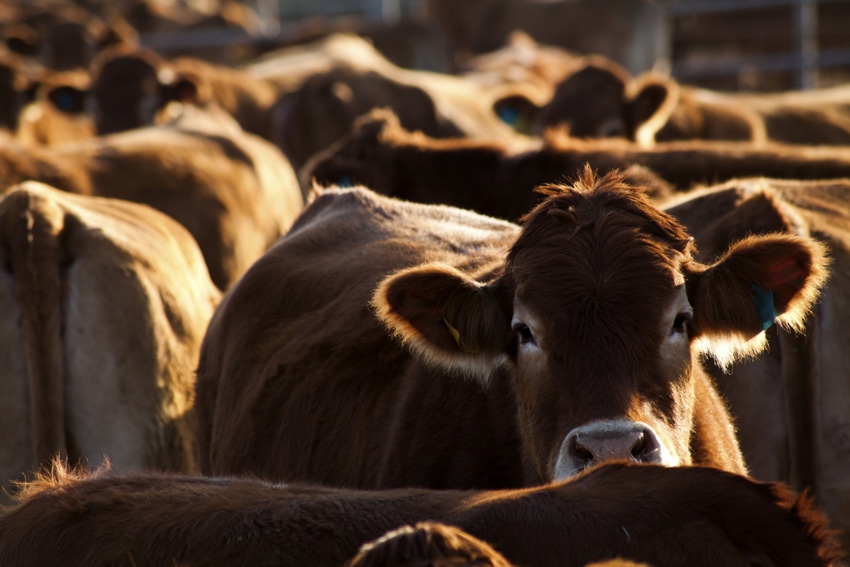Cattle finishing returns to be near breakeven prices
Breakeven levels likely in first half of 2021, with chance for positive net returns in second quarter.

The cattle industry continues to navigate the impacts of the COVID-19 pandemic, but Purdue University agricultural economist Michael Langemeier reported in "farmdoc daily" that cattle finishing net returns for the rest of 2020 are expected to be much closer to breakeven prices. He provided updates to feeding cost of gain, breakeven prices and net return estimates for the first nine months of 2020 as well as projections through the second quarter of 2021.
According to the report, feeding cost of gain averaged $84.37/cwt. in 2019, ranging from a low of $81.61 in October to $91.67 in March. Feeding cost of gain averaged $83.27/cwt. in the first quarter and $84.28 in the second quarter of 2020. Projected feeding cost of gain for the third and fourth quarters of 2020 are $78.75 and $80.75, respectively.
Langemeier noted that feeding cost of gain is sensitive to changes in feed conversions, corn prices and alfalfa prices. Regression analysis was used to examine the relationship between feeding cost of gain and feed conversion, corn prices and alfalfa prices. Results were as follows: each 10-cent increase in feed conversion increases feeding cost of gain by $1.24/cwt., each 10 cents/bu. increase in corn prices increases feeding cost of gain by 88 cents/cwt. and each $5-per-ton increase in alfalfa prices increases feeding cost of gain by 50 cents/cwt.
Net returns, which were computed using closeout months rather than placement months, averaged a loss of $80 per head in 2019. Net losses averaged $10 in the first quarter and $165 per head in the second quarter. Although large, Langemeier noted that this was approximately $90-per-head lower than his estimates in early May. As July rolled around, lower fed cattle prices and a high feeder-to-fed-cattle price ratio led to losses of $265 per head. By August, losses were less, at $65 per head.
According to Langemeier, breakeven prices for the first two quarters of 2020 averaged approximately $119/cwt. Average breakeven prices for the third and fourth quarters are expected to be approximately $108 and $113, respectively.
For the first and second quarters of 2021, breakeven prices are expected to range from $116 to $119. Langemeier said combining these breakeven prices with Livestock Marketing Information Center fed cattle price projections results in small expected losses in the first quarter of $25-50 per head and expected net returns of $25-50 for the second quarter. Due to the amount uncertainty related to the current market environment, Langemeir said typical caveats apply to the projections. However, net return prospects could change rapidly.
Average cattle finishing losses in 2019 were estimated to be approximately $80 per head, while average losses for 2020 are projected to be approximately $85 per head.
“Current breakeven and fed cattle price projections suggest that net returns will be closer to breakeven levels in the first six months of 2021, with the largest chance for positive net returns occurring in the second quarter,” he said.
Market recap
December live cattle futures were lower this week. Contracts closed lower Monday at $110.825/cwt. and Thursday at $109.55/cwt.
November feeder cattle futures were mostly higher. Contracts closed higher Monday at $135.55/cwt. and Thursday at $136.475/cwt.
The Choice and Select cutouts closed lower at $210.48/cwt. and $196.50/cwt., respectively.
February lean hog futures started the week lower but posted strong gains as the week progressed. Contracts closed Monday at $66.625/cwt. and Thursday at $71.425/cwt.
The pork cutout continued to strengthen this week. The wholesale pork cutout closed higher at $101.42/cwt. Loins closed higher at $88.99/cwt., and hams were sharply higher at $93.14/cwt. Bellies were $173.89, up from $160.98/cwt. last week.
Hogs delivered to the western Corn Belt were nearly unchanged from last week, closing at $64.57/cwt.
USDA reported the Eastern Region whole broiler/fryer weighted average price at 62.28 cents/lb. on Oct. 9.
According to USDA, egg prices were steady, with a mostly steady undertone. Supplies and offerings were light. Demand was light to good.
Large eggs delivered to the Northeast were higher at $1.10-1.14/doz. Prices in the Southeast and Midwest were also higher at $1.14-1.17/doz. and $1.02-1.05/doz., respectively. Large eggs delivered to California were $1.77/doz.
For turkeys, USDA said the market was steady to firm, and demand was moderate to good. The price range for hens was $1.12-1.19/lb., and the price range for toms was $1.14-1.19/lb.
About the Author(s)
You May Also Like




.png?width=300&auto=webp&quality=80&disable=upscale)
